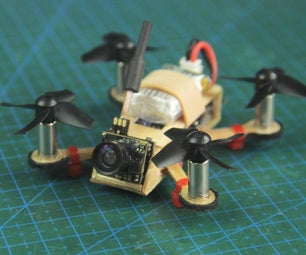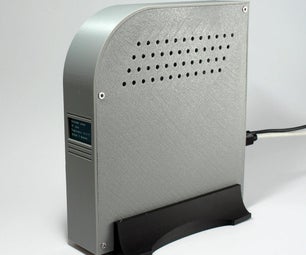Introduction: DIY Boost Converter || How to Step Up DC Voltage Efficiently
In this project I will show you an efficient and common way how to step up DC voltages. I will also demonstrate how easy it can be to build a boost converter with the help of an ATtiny85. Let's get started!
Step 1: Watch the Video!
The video gives you all the information you need to create your own boost converter. The next steps just contain additional information for your convenience.
Step 2: Order Your Components!
Here is a list of all the parts that you need with example sellers (affiliate links):
Aliexpress:
1x ATtiny85: https://s.click.aliexpress.com/e/_dVaIID1
1x IRLZ44N MOSFET: https://s.click.aliexpress.com/e/_dWhSrDl
1x 100µH Coil: https://s.click.aliexpress.com/e/_dU3eskP
2x 47µF Capacitor: https://s.click.aliexpress.com/e/_d7dOwRz
1x 100kΩ Potentiometer: https://s.click.aliexpress.com/e/_dX83GAF
1x 1N5819 Schottky Diode: https://s.click.aliexpress.com/e/_dYR45Bh
2x 10kΩ, 1x 1kΩ, 1x 2.2kΩ, 1x 100Ω Resistor: https://s.click.aliexpress.com/e/_dTPpXjt
2x PCB Terminal: https://s.click.aliexpress.com/e/_dYbstfZ
Perfboard: https://s.click.aliexpress.com/e/_dXx2Zv5
Ebay:
1x ATtiny85: http://rover.ebay.com/rover/1/711-53200-19255-0/1?...
1x IRLZ44N MOSFET: http://rover.ebay.com/rover/1/711-53200-19255-0/1?...
1x 100µH Coil: http://rover.ebay.com/rover/1/711-53200-19255-0/1?...
2x 47µF Capacitor: http://rover.ebay.com/rover/1/711-53200-19255-0/1?...
1x 100kΩ Potentiometer: http://rover.ebay.com/rover/1/711-53200-19255-0/1?...
1x 1N5819 Schottky Diode: http://rover.ebay.com/rover/1/711-53200-19255-0/1?...
2x 10kΩ, 1x 1kΩ, 1x 2.2kΩ, 1x 100Ω Resistor: http://rover.ebay.com/rover/1/711-53200-19255-0/1?...
2x PCB Terminal: http://rover.ebay.com/rover/1/711-53200-19255-0/1?...
Perfboard: http://rover.ebay.com/rover/1/711-53200-19255-0/1?...
Amazon.de:
1x ATtiny85: http://amzn.to/1E9ubfB
1x IRLZ44N MOSFET: http://amzn.to/1Osfnxn
1x 100µH Coil: http://amzn.to/1OsfxVz
2x 47µF Capacitor: http://amzn.to/1OsfIjE
1x 100kΩ Potentiometer: http://amzn.to/1OsfBEN
1x 1N5819 Schottky Diode: http://amzn.to/1OsfwBc
2x 10kΩ, 1x 1kΩ, 1x 2.2kΩ, 1x 100Ω Resistor: http://amzn.to/1E9uEhN
2x PCB Terminal: http://amzn.to/1GzZAZw
Perfboard: http://amzn.to/1YAqPI8
Step 3: Build the Circuit!
Here you can find the schematic for the project and reference pictures. The soldering process takes around 45 minutes if you know what you are doing.
Step 4: Upload the Code!
In order to upload the code to the ATtiny85 you can use an Arduino Uno. Here is an older video of mine in which I demonstrated how to do that:
Attachments
Step 5: Success!
You did it! You just created your own Boost Converter!
Feel free to check out my YouTube channel for more awesome projects:
http://www.youtube.com/user/greatscottlab
You can also follow me on Facebook, Twitter and Google+ for news about upcoming projects and behind the scenes information:














